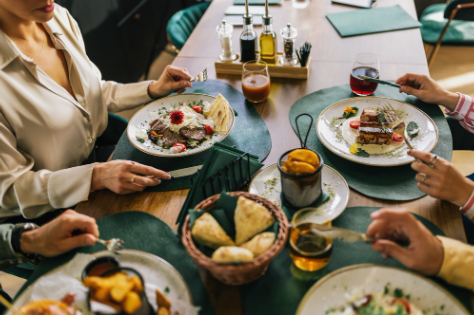South Asia, a culturally rich region encompassing countries like India, Pakistan, Bangladesh, Sri Lanka, and Nepal, is globally renowned for its vibrant cuisine. At the heart of this flavorful food culture lies one essential element: spices. South Asian spices do more than just add heat or aroma—they tell stories of ancient trade routes, medicinal traditions, regional identities, and culinary artistry.
From turmeric’s golden hue to the bold warmth of garam masala, South Asian spices are a cornerstone of the region’s history and heritage. This article explores the importance, variety, and impact of South Asian spices in daily life and global cuisine.
A Rich History Rooted in Spice
The history of South Asia is deeply intertwined with the spice trade. For thousands of years, spices like black pepper, cinnamon, cardamom, and cloves were so valuable that they were traded as currency. Ancient traders from the Middle East, Europe, and Southeast Asia traveled thousands of miles to reach the spice-rich lands of the Indian subcontinent.
This trade not only shaped economies but also influenced global politics, colonization, and cultural exchange. European colonial powers, notably the Portuguese, Dutch, and British, were drawn to South Asia largely because of its rich spice resources.
Common South Asian Spices and Their Uses
South Asian cuisine is known for its complex layering of flavors, often achieved through the masterful use of various spices. Here are some of the most essential ones:
1. Turmeric (Haldi)
Turmeric is a bright yellow root with earthy flavor and mild bitterness. It’s used in nearly every South Asian curry for color and its anti-inflammatory properties. It’s also a key ingredient in traditional Ayurvedic medicine.
2. Cumin (Jeera)
Cumin seeds have a warm, nutty flavor and are used whole or ground. Toasted in oil at the beginning of cooking, cumin forms the flavor base of many dishes, from dals (lentils) to rice and meat curries.
3. Coriander (Dhania)
Both the seeds and fresh leaves of the coriander plant are widely used. Ground coriander has a citrusy, slightly sweet taste and is often paired with cumin in spice blends.
4. Cardamom (Elaichi)
Cardamom comes in two types: green and black. Green cardamom is aromatic and slightly sweet, used in desserts, tea (chai), and rice dishes. Black cardamom has a smoky, more intense flavor used in savory curries and biryanis.
5. Cloves (Laung)
These dried flower buds have a strong, pungent flavor and are commonly used in spice blends like garam masala and in rice dishes, meats, and pickles.
6. Cinnamon (Dalchini)
Cinnamon sticks or powder add sweet warmth to both savory dishes and desserts. In South Asia, cinnamon is often used in biryanis and spiced teas.
7. Fenugreek (Methi)
Used both as seeds and leaves, fenugreek adds a distinctive bitterness and is especially popular in Punjabi and Bengali cuisine. It also has numerous medicinal benefits, particularly for digestion and blood sugar control.
8. Mustard Seeds (Rai or Sarson)
Often used in tempering (tadka), mustard seeds crackle when added to hot oil, releasing a nutty, pungent aroma that enhances dals, vegetables, and pickles.
9. Chilies (Mirch)
Red and green chilies are essential for adding heat. South Asian dishes use both fresh chilies and dried powders, with variations in heat levels and flavors.
10. Asafoetida (Hing)
A unique spice with a strong, sulfurous aroma that mellows during cooking. It’s commonly used in lentil dishes and vegetarian cooking to enhance umami and aid digestion.
Signature Spice Blends
South Asian cooking often involves blending spices into complex mixtures that define regional tastes:
- Garam Masala: A warm blend of ground spices like cinnamon, cardamom, cloves, cumin, and nutmeg. Used toward the end of cooking for aroma and depth.
- Chaat Masala: A tangy, salty mix including dried mango powder (amchur), black salt, cumin, and chili powder. Sprinkled on fruits, snacks, and street food.
- Panch Phoron: A Bengali five-spice mix made with equal parts of fenugreek, nigella, fennel, mustard, and cumin seeds, used for tempering.
Each household or region may have its own variation of these blends, passed down through generations.
Spices Beyond the Kitchen
South Asian spices aren’t just culinary—they have deep cultural and medicinal significance:
- Ayurveda and Unani systems of traditional medicine use spices like turmeric, ginger, and fennel for healing.
- Spices are used in religious rituals, such as turmeric in Hindu ceremonies.
- Beauty and skincare practices include turmeric face masks and sandalwood paste.
Global Influence
South Asian spices have profoundly influenced global cuisines—from curry houses in the UK to masala chai cafés in North America. As more people embrace global cooking and plant-based diets, the demand for South Asian spice blends and cooking methods continues to rise.
Final Thoughts
South Asian spices are more than flavoring agents—they are symbols of history, health, culture, and connection. They transform ordinary ingredients into memorable meals and bring warmth, color, and life to any dish. Whether you’re new to South Asian cooking or grew up with the scent of cumin and cardamom in your kitchen, exploring these spices opens the door to a rich and aromatic world of flavor. So the next time you sprinkle turmeric into a curry or toast cumin in oil, remember—you’re part of a tradition that spans thousands of years and countless meals shared in joy.




